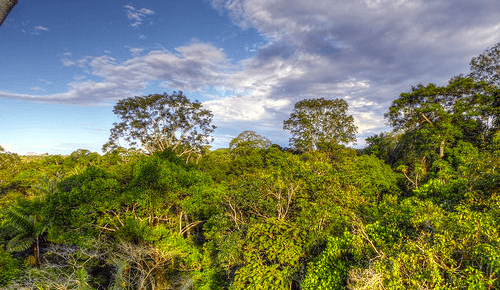La stima della biomassa e dell’areale delle foreste rappresentano importanti informazioni per la loro corretta gestione e salvaguardia. La determinazione della biomassa delle foreste è inoltre d’importanza cruciale per la realizzazione di modelli del ciclo del carbonio e di programmi e strategie di mitigazione. Un nuovo studio pubblicato di recente sulla rivista Remote Sensing (tra gli autori, i ricercatori CMCC G. Vaglio Laurin e R. Valentini) ha impiegato sensori LiDAR (light detection and ranging) full-waveform (FW) per la misura dell’area e della biomassa di una foresta tropicale nel Ghana sud-occidentale.
I risultati promettenti dello studio confermano le evidenze positive già raccolte in passato riguardo l’impiego di dati LiDAR per il monitoraggio delle risorse forestali.
L’abstract dell’articolo:
We tested metrics from full-waveform (FW) LiDAR (light detection and ranging) as predictors for forest basal area (BA) and aboveground biomass (AGB), in a tropical moist forest. Three levels of metrics are tested: (i) peak-level, based on each return echo; (ii) pulse-level, based on the whole return signal from each emitted pulse; and (iii) plot-level, simulating a large footprint LiDAR dataset. Several of the tested metrics have significant correlation, with two predictors, found by stepwise regression, in particular: median distribution of the height above ground (nZmedian) and fifth percentile of total pulse return intensity (i_tot5th). The former contained the most information and explained 58% and 62% of the variance in AGB and BA values; stepwise regression left us with two and four predictors, respectively, explaining 65% and 79% of the variance. For BA, the predictors were standard deviation, median and fifth percentile of total return pulse intensity (i_totstdDev, i_totmedian and i_tot5th) and nZmedian, whereas for AGB, only the last two were used. The plot-based metric showed that the median height of echo count (HOMTC) performs best, with very similar results as nZmedian, as expected. Cross-validation allowed the analysis of residuals and model robustness. We discuss our results considering our specific case scenario of a complex forest structure with a high degree of variability in terms of biomass.
Leggi la versione integrale dell’articolo:
Pirotti F., Vaglio Laurin G., Vettore A. Masiero A. and Valentini R.
Small Footprint Full-Waveform Metrics Contribution to the Prediction of Biomass in Tropical Forests
2014, Remote Sensing, 6(10), 9576-9599; doi:10.3390/rs6109576




